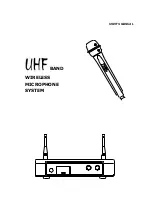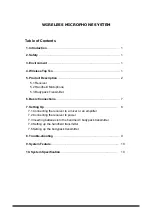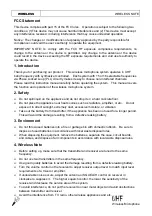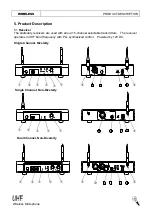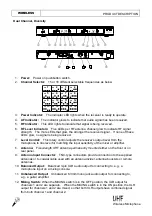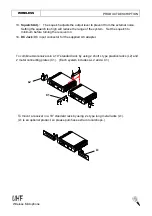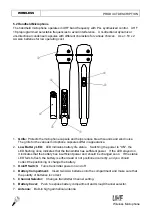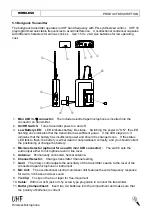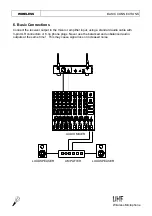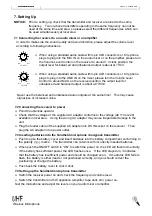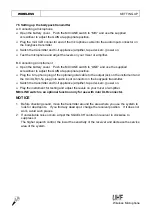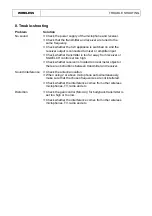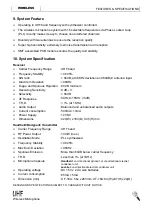
MAX
MIN
VOLUME
VOLUME
MIN
MAX
WIRELESS
SETTING UP
7. Setting Up
NOTICE:
Prior to setting up, check that the transmitter and receiver are tuned to the same
frequency. Two or above transmitters operating in the same frequency can not be
used at the same time and area, so please select the different frequencies which can
be used simultaneously at local area.
7.1 Connecting the receiver to an audio mixer or an amplifier
8
Wireless Microphone
Ø
When using a standard audio cable with 3-pin XLR connectors or 6.3
j
phone
plugs to plug into the MIC IN on the audio mixer or on the amplifier, please turn
the Volume Level Control on the receiver to around 1 o
’
clock position, the
output level for balanced and unbalanced output is about at 77mV.
Ø
When using a standard audio cable with 3-pin XLR connectors or 6.3
j
phone
plugs to plug into the LINE IN on the mixer, please turn the Volume Level
Control to around MAX. on the receiver position, the output level for
unbalanced and balanced output is about at 770mV.
.
7.2 Connecting the receiver to power
Ø
Point the antennas upward.
Ø
Check that the voltage of the supplied AC adapter conforms to the voltage (AC110 or 220)
available in local area. Using the wrong AC adapter may cause irreparable damage to the
unit.
Ø
Plug the feeder cable of the supplied AC adapter into DC IN socket on the receiver. Then
plug the AC adapter into a power outlet.
7.3 Inserting batteries into the handheld microphone / bodypack transmitter
Ø
Push to open the battery cover and insert batteries into the battery compartment conforming to
the polarity (+)(-) marks. The transmitter can not work with incorrectly inserted batteries.
Ø
When push the ON/OFF switch to
“
ON
”
to switch the power on, the LED will flash momentarily.
If the battery has sufficient power, the LED flashes once. If the LED stayed on, it indicates
that the battery has insufficient power and should be changed soon. If the status LED fails to
flash, the battery is either dead or not positioned correctly, and you should correct the
positioning or change the battery.
Ø
Push back the battery cover to click it shut.
7.4 Setting up the handheld microphone transmitter
Ø
Switch the receiver power on and check the frequency and volume level.
Ø
Switch the transmitter and hi-fi appliance (amplifier, tape deck etc.) power on.
Test the microphone and adjust the levels on your audio mixer or amplifier.
In order to make sure the sound quality and avoid distortion, please adjust the volume level
according to following instructions.
Never use the balanced and unbalanced audio outputs at the same time! This may cause
signal loss or increased noise.

